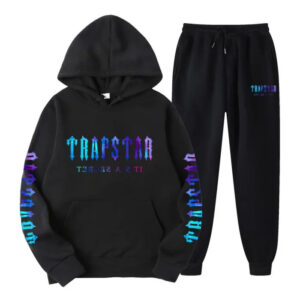
In the ever-evolving digital marketing landscape, B2B brands are increasingly under pressure to deliver measurable results from their advertising efforts. One platform that has steadily risen to meet the demands of B2B marketers is LinkedIn. With over 1 billion professionals on its network, LinkedIn offers unmatched access to decision-makers, C-level executives, and influencers in virtually every industry. For companies running B2B Performance Campaigns, LinkedIn Ads can be a highly strategic investment—if used correctly.
This article explores how to effectively leverage LinkedIn Ads for B2B performance marketing, offering a deep dive into campaign structures, targeting strategies, ad formats, and optimization techniques that can deliver high-impact results. Whether you’re new to LinkedIn advertising or seeking to refine your approach, this guide will help you navigate the nuances of performance-driven B2B campaigns with confidence and precision.
Why LinkedIn Ads are Ideal for B2B Performance Campaigns
LinkedIn’s platform is purpose-built for professionals, which makes it uniquely suited for B2B marketing. Unlike other platforms where users are largely in “personal mode,” LinkedIn users are often actively seeking insights, services, and opportunities that benefit their work life. This results in higher intent traffic, especially when users engage with promoted content or sponsored messaging.
When running B2B Performance Campaigns, marketers need to focus on direct outcomes like lead generation, product demos, webinar signups, and content downloads. LinkedIn facilitates this by offering advanced targeting options based on company size, industry, job title, seniority, and even specific company names. These granular targeting capabilities ensure your ads are served to the most relevant audiences, thereby increasing the likelihood of conversion and reducing wasted spend.
Setting the Foundation: Campaign Objectives and Structure
Choosing the right campaign objective is the first step in ensuring performance success. LinkedIn provides multiple campaign objectives aligned with different stages of the funnel—ranging from brand awareness and website visits to lead generation and conversions. For performance marketing, lead generation and conversions are often the go-to objectives because they are tied directly to tangible outcomes.
It’s important to segment your campaigns based on funnel stages or target personas. For instance, top-of-the-funnel campaigns might promote thought leadership content, while mid-funnel campaigns can drive webinar registrations, and bottom-funnel campaigns may focus on product demos. Structuring your campaigns this way allows for better tracking and optimization of each touchpoint in the buyer’s journey.
Moreover, LinkedIn’s integration with popular CRM platforms and marketing automation tools like HubSpot, Marketo, and Salesforce allows seamless lead syncing. This enables real-time tracking of performance metrics and closes the loop between ad spend and ROI.
Precision Targeting for High-Intent Audiences
LinkedIn’s real power lies in its targeting capabilities. B2B marketers can tailor campaigns using a combination of demographic filters such as company name, industry, job function, job title, seniority level, and geographic location. One effective tactic is to use Matched Audiences to upload a list of target companies or decision-makers and run Account-Based Marketing (ABM) campaigns.
LinkedIn also allows retargeting based on website visits, video views, and lead form interactions. This means you can create highly personalized remarketing campaigns that address pain points already expressed by your audience, enhancing the probability of conversion.
To expand reach while retaining targeting accuracy, LinkedIn’s Lookalike Audiences feature can help find professionals who share characteristics with your existing customers. This is particularly useful when scaling your campaign without sacrificing quality.
Crafting High-Impact Ad Creatives
In performance marketing, every impression counts. Your ad creatives must resonate with the pain points and aspirations of your target audience. Strong copy, compelling visuals, and a clear value proposition are key. Sponsored Content is particularly effective for lead generation, especially when combined with Lead Gen Forms—pre-filled forms that significantly reduce friction for the user.
For more personalized outreach, Message Ads and Conversation Ads can deliver tailored content directly to a user’s inbox. However, their success largely depends on the sender’s profile and the relevance of the message. Ads that feel overly promotional may be ignored, whereas those offering genuine value—such as exclusive content or a time-sensitive offer—tend to perform better.
A/B testing is critical in refining your creatives. Test variations in headlines, calls to action, and imagery to determine which combinations deliver the highest engagement and conversion rates.
Measuring Success and Optimization
The effectiveness of LinkedIn Ads for B2B Performance Campaigns ultimately hinges on your ability to measure and optimize based on data. LinkedIn Campaign Manager provides detailed insights on impressions, clicks, conversions, and cost per result. For deeper insights, integrating LinkedIn with platforms like Google Analytics or using third-party tracking tools allows attribution across multiple touchpoints.
Key performance metrics to monitor include Click-Through Rate (CTR), Conversion Rate, Cost Per Lead (CPL), and Return on Ad Spend (ROAS). However, it’s essential to go beyond surface metrics and assess lead quality. Not all conversions are equal—high-quality leads that align with your Ideal Customer Profile (ICP) are more valuable than a high volume of unqualified leads.
Optimization should be an ongoing process. This includes refining your audience segments, pausing underperforming ads, reallocating budgets to top-performing campaigns, and testing new messaging angles based on audience feedback or behavioral data.
Compliance, Budgeting, and ROI Considerations
B2B advertising often deals with sensitive data, especially in industries like healthcare, finance, and enterprise software. It’s important to ensure all campaigns comply with data privacy laws such as GDPR and CCPA. LinkedIn’s native lead forms simplify this by providing consent checkboxes and privacy policy links.
Budgeting for LinkedIn Ads requires strategic foresight. Compared to platforms like Facebook or Google Display Network, LinkedIn’s cost-per-click (CPC) and cost-per-impression (CPM) can be significantly higher. However, this is often offset by the higher quality of leads and improved conversion rates. For maximum ROI, it’s important to continuously align your ad spend with your revenue goals and conversion data.
How to Build Expertise in LinkedIn Ads Strategy
Mastering LinkedIn Ads is a valuable skill for any B2B marketer, especially in a results-driven landscape. For those looking to deepen their understanding, enrolling in a performance marketing course online can offer structured learning on advanced strategies, data interpretation, and campaign automation techniques that elevate ad performance.
Such courses often include practical case studies, platform walkthroughs, and mentorship opportunities that allow marketers to gain hands-on experience and optimize real-time campaigns.
Final Thoughts
As B2B marketing continues to shift toward measurable, outcome-based strategies, LinkedIn Ads have emerged as a cornerstone channel for performance-driven campaigns. By aligning the right objectives, leveraging precision targeting, creating compelling ad experiences, and continuously optimizing based on analytics, brands can not only generate high-quality leads but also demonstrate clear ROI to stakeholders.
For marketers aiming to thrive in the competitive world of B2B Performance Campaigns, LinkedIn offers the right blend of audience, tools, and data-driven insight. The key lies in moving beyond vanity metrics and embracing a structured, experiment-driven approach to maximize results.







